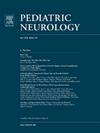迷走神经刺激对Dravet综合征患者的疗效:一个病例系列和荟萃分析。
IF 3.2
3区 医学
Q2 CLINICAL NEUROLOGY
引用次数: 0
摘要
目的:本病例系列和荟萃分析旨在确定迷走神经刺激(VNS)对Dravet综合征(DS)患者的有效性。方法:所有DS和VNS患者纳入本病例系列。为了进行meta分析,对PubMed、Cochrane和Embase等电子数据库进行文献检索。使用关键评估工具评估研究质量。应答率(比基线减少50%癫痫发作)是主要结果,在特定随访点(至少6个月)定量合成。根据癫痫持续时间、男性比例和随访时间进行亚组分析。此外,认知和行为改变仅作为病例系列的次要结局进行分析。结果:在病例系列中,4例患者中有2例有反应。在荟萃分析中,在最初检索的1183项研究中,包括92名患者的9项研究被纳入。总应答率达到0.55(95%可信区间[CI] 0.45至0.64)。进行亚组分析。癫痫持续时间大于或等于6年组和小于6年组的应答率分别为0.38 (95% CI 0.14 ~ 0.61)和0.65 (95% CI 0.47 ~ 0.82) (P = 0.07)。不同男性比例组(>50%,≤50%)和不同随访时间组(大于等于3年,小于3年)应答率无异质性(P > 0.1)。结论:VNS是对药物无效的退行性椎体滑移患者的有效选择。癫痫持续时间短(小于6年)的患者容易对VNS有反应。本文章由计算机程序翻译,如有差异,请以英文原文为准。
Effectiveness of Vagus Nerve Stimulation in Patients With Dravet Syndrome: A Case Series and Meta-Analysis
Objective
This case series and meta-analysis aimed to determine effectiveness of vagus nerve stimulation (VNS) in patients with Dravet syndrome (DS).
Methods
All patients with DS and VNS were included in this case series. For meta-analysis, a literature search of electronic databases PubMed, Cochrane, and Embase was performed. Critical Appraisal Tools were used to evaluate study quality. Responder (>50% seizure reduction from baseline) rate was the main outcome, which was quantitatively synthesized at specific follow-up points (at least six months). Subgroup analyses were conducted based on duration of epilepsy, proportion of males, and duration of follow-up. Additionally, cognitive and behavior changes were analyzed as secondary outcomes in case series only.
Results
Of the case series, two of four patients responded. In the meta-analysis, of 1183 studies retrieved in the initial search, nine comprising 92 patients were included. The overall responder rate reached 0.55 (95% confidence interval [CI] 0.45 to 0.64). Subgroup analyses were performed. The responder rates in groups with duration of epilepsy groups greater than or equal to six years and less than six years were 0.38 (95% CI 0.14 to 0.61) and 0.65 (95% CI 0.47 to 0.82) (P = 0.07). No heterogeneity was found in responder rate in groups with different proportion of males (>50%, ≤50%) or two groups with different duration of follow-up (greater than or equal to three years, less than three years) (P > 0.1).
Conclusions
VNS was an effective option in patients with DS who failed to respond to medications. Patients with short duration of epilepsy (less than six years) were prone to respond to VNS.
求助全文
通过发布文献求助,成功后即可免费获取论文全文。
去求助
来源期刊

Pediatric neurology
医学-临床神经学
CiteScore
4.80
自引率
2.60%
发文量
176
审稿时长
78 days
期刊介绍:
Pediatric Neurology publishes timely peer-reviewed clinical and research articles covering all aspects of the developing nervous system.
Pediatric Neurology features up-to-the-minute publication of the latest advances in the diagnosis, management, and treatment of pediatric neurologic disorders. The journal''s editor, E. Steve Roach, in conjunction with the team of Associate Editors, heads an internationally recognized editorial board, ensuring the most authoritative and extensive coverage of the field. Among the topics covered are: epilepsy, mitochondrial diseases, congenital malformations, chromosomopathies, peripheral neuropathies, perinatal and childhood stroke, cerebral palsy, as well as other diseases affecting the developing nervous system.
 求助内容:
求助内容: 应助结果提醒方式:
应助结果提醒方式:


